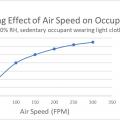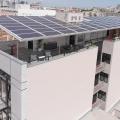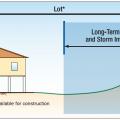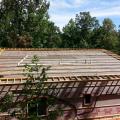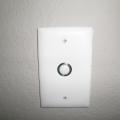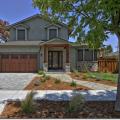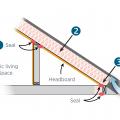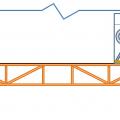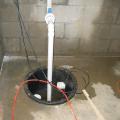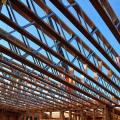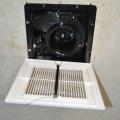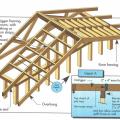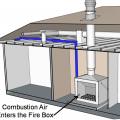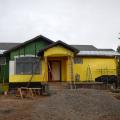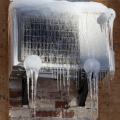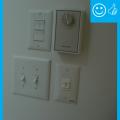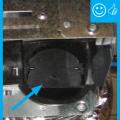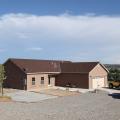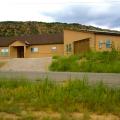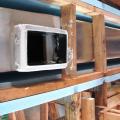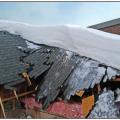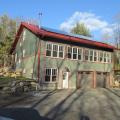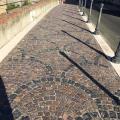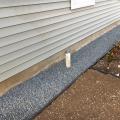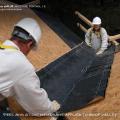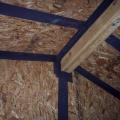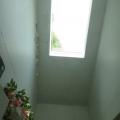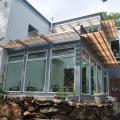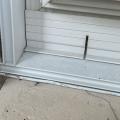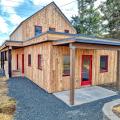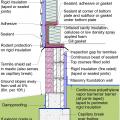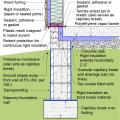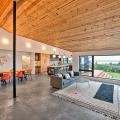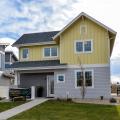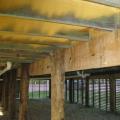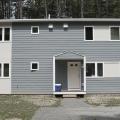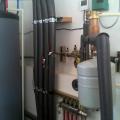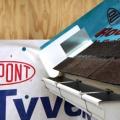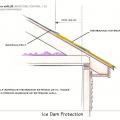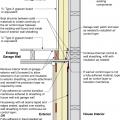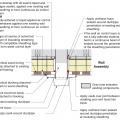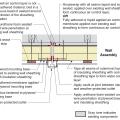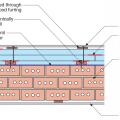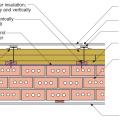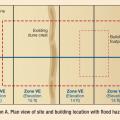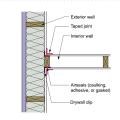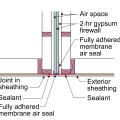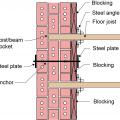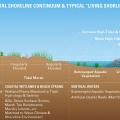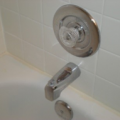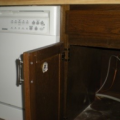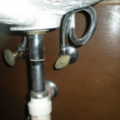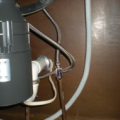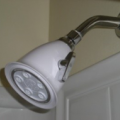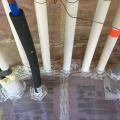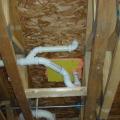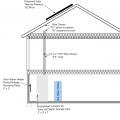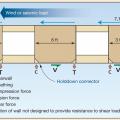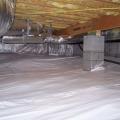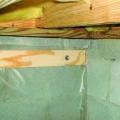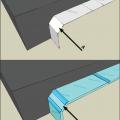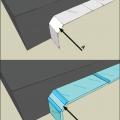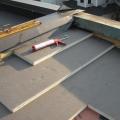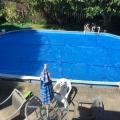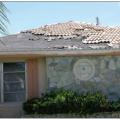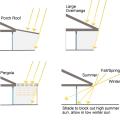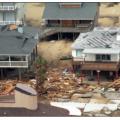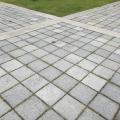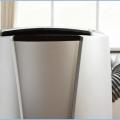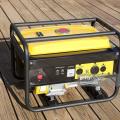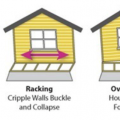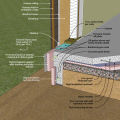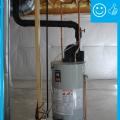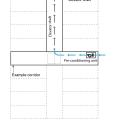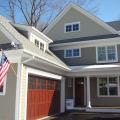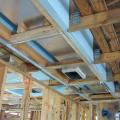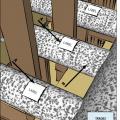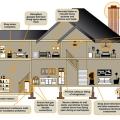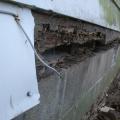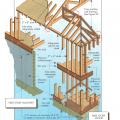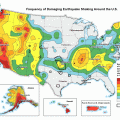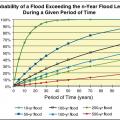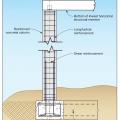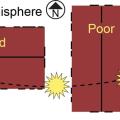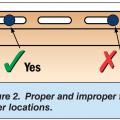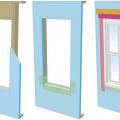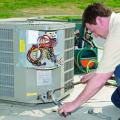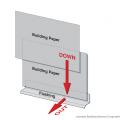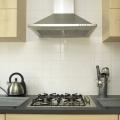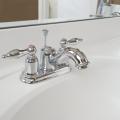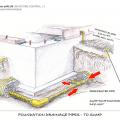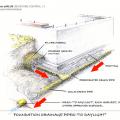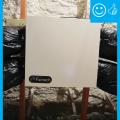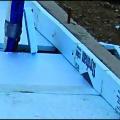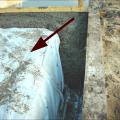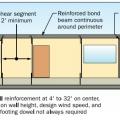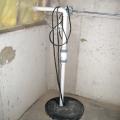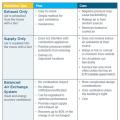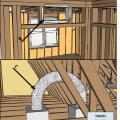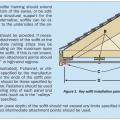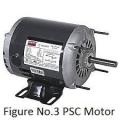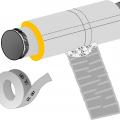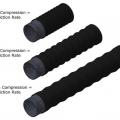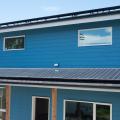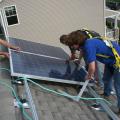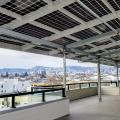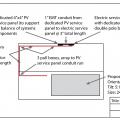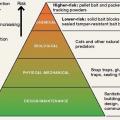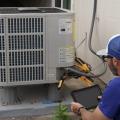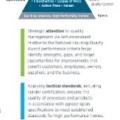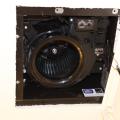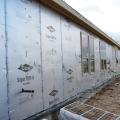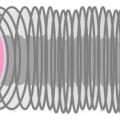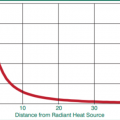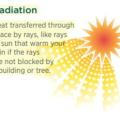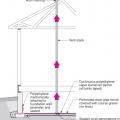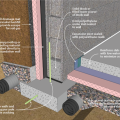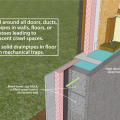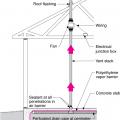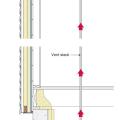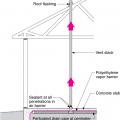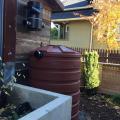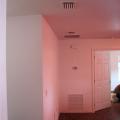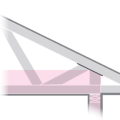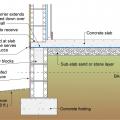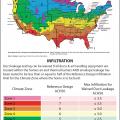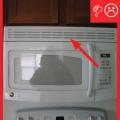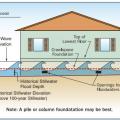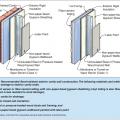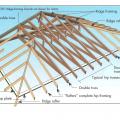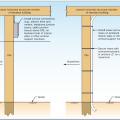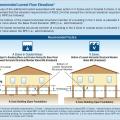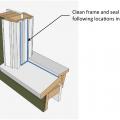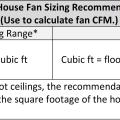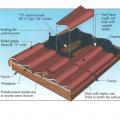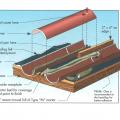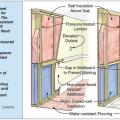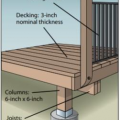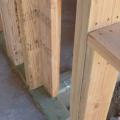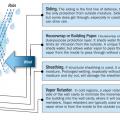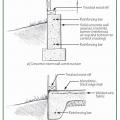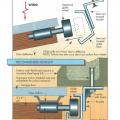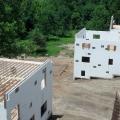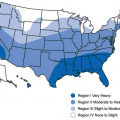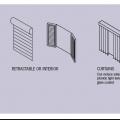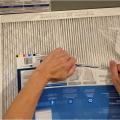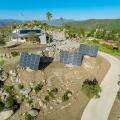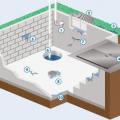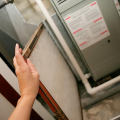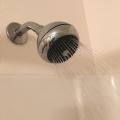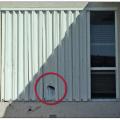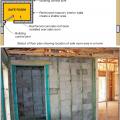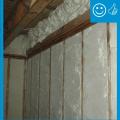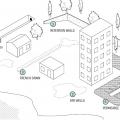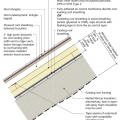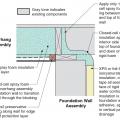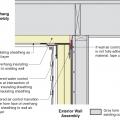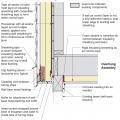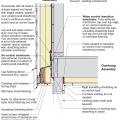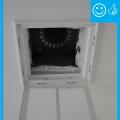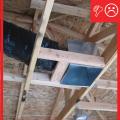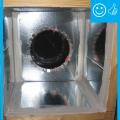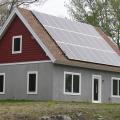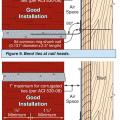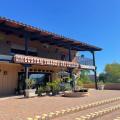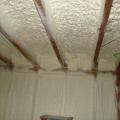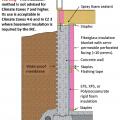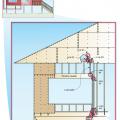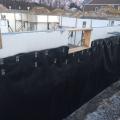Showing results 2001 - 2250 of 4973
Off the Grid Design built this multifamily home in the marine climate in San Francisco, CA, and certified it to DOE Zero Energy Ready Home specifications in 2018.
On ocean-front lots set the home as far back on the lot as possible, preferably with a protective dune between structures and shoreline.
On top of the ice-and-water shield, the builder installed horizontal beams that were raised 6 inches off the deck to allow room for spray foam insulation.
On-demand hot water pumps speed hot water to faucets at a push of a button to limit water waste and save energy.
One Sky Homes built this custom home in the marine climate in San Jose, CA, and certified it to DOE Zero Energy Ready Home specifications in 2014.
One way to air seal and insulate kneewalls – add insulation and a rigid air barrier along roof line of unconditioned attic space outside kneewall
Open floor trusses used as return air plenums can draw air from any place connected to that floor
Open-web floor joists provide space for ducts between the floors of a two-story home.
Opening the outlet on a bath fan reveals model information and provides access to the motor
Operable windows can provide fresh air to a multifamily building but each unit should also have it’s own fresh air intakes and exhaust vents
Over the coated sheathing air barrier, the builder installed a continuous layer of 2-inch rigid foam and then covered this with a yellow mesh rain screen layer.
Over the taped rigid foam board, 2x4 furring strips provide a ventilating air gap and drainage plane under the engineered wood lap siding. The furring strips were attached with structural screws to provide an attachment surface for the siding.
P3 Builder Group built this custom for buyer home in the mixed-humid climate in Sagaponack, NY, and certified it to DOE Zero Energy Ready Home specifications in 2020.
Packing tape has been removed and damper will be able to function properly once fan is installed
Palo Duro Homes built this production home in the mixed-dry climate in Albuquerque, NM, and certified it to DOE Zero Energy Ready Homes specifications in 2013.
Palo Duro Homes built this production home in the mixed-dry climate in Albuquerque, NM, and certified it to DOE Zero Energy Ready Home specifications in 2014.
Palo Duro provides every home owner with a manual providing equipment warranties, maintenance tips, certifications, and photos of each wall of the home before drywall installation so home owners can see where wiring and plumbing are located.
Pan stock is used to form a boot for future register installation
Passive cooling techniques can reduce or eliminate the use of air conditioning and can be used for backup cooling during emergencies.
Passive venting options for a heat pump water heater located in a closet or small room include: a fully louvered door, high and low transfer grilles, or a high transfer grille with a 0.75-inch door undercut
Patio slabs, porch slabs, walks, and driveways sloped ≥ 0.25 in. per ft. away from home to edge of surface, or 10 ft., whichever is less
Paul Torcellini built this custom for buyer home in the cold climate in Eastford, CN, and certified it to DOE Zero Energy Ready Home specifications in 2016.
Pavers, gravel, stone, and other permeable surfaces allow rainwater some opportunity to drain minimizing storm water runoff.
Peel-and-stick panel tape provides added assurance that SIP panel seams will remain airtight
Peppertree Homes built this custom for buyer home in the cold climate in Waitsfield, VT, and certified it to DOE Zero Energy Ready Home specifications in 2016.
Permanent awnings help minimize unwanted solar heat gain from high overhead summer sun.
Permanent exterior low-E storm windows include weep channels in the bottom leg of the frame to allow for drainage
Permanent options for keeping sun off windows to minimize solar heat gain include permanent overhangs and awnings, frames, and louvers.
Pest prevention can be as simple as 4 inch thick gravel or crushes stone around the perimeter and extending two feet out from the house.
Pest proofing of this unvented crawlspace includes a metal termite shield that extends out from the sill plate, metal flashing wrapping the bottom of exterior rigid foam, and a termite inspection gap above interior rigid foam.
Pest protection measures include a termite shield under the rim joist and extending out on either side of the stem wall, insect screening under the furring air gap, and brick veneer to protect slab-edge insulation.
PEX piping is laid over 2 inches of XPS before the slab is poured to create a radiant floor heating system in this extensive home remodel.
PEX piping loops are laid before the slab is poured for this radiant floor heating system
Philgreen Construction built this 1,770-ft2 home in Fort Collins, Colorado, to the performance criteria of the DOE Zero Energy Ready Home (ZERH) program.
Philgreen Construction built this attached home in the cold climate in Fort Collins, CO, and certified it to DOE Zero Energy Ready Home specifications in 2021.
Philgreen Construction built this multifamily home in the cold climate in Fort Collins, CO, and certified it to DOE Zero Energy Ready Home specifications in 2019.
Photocells sense daylight entering from windows, ambient light from other luminaires, and reflected light bouncing around the room.
Pier foundations, hurricane strapping, borate- and pressure-treated lumber, and high-density spray foam insulation help protect this New Orleans home from costal flooding and storms (Source: Green Coast Enterprises).
Pioneer Valley Habitat for Humanity built this affordable home in the cold climate in Northampton, MA, and certified it to DOE Zero Energy Ready Home specifications in 2020.
Pipe insulation helps retain heat in the pipes which provide hot water from the air-to-water heat pump for domestic hot water and space heating.
Place first shingle and next section of sidewall flashing over upper edge of diverter
Placing both interior and exterior HVAC units on an elevated surface provides greater protection against flooding.
Plan view (from above) showing how the existing garage wall gypsum board is cut away to air-seal the shared wall before adding rigid foam insulation on the garage and exterior walls of the home.
Plan view of duct or pipe penetration through exterior wall showing flashing and air sealing details
Plan view of electric box installation in exterior wall showing flashing and air sealing details
Plan view of exterior masonry brick wall retrofitted with furring strips, three layers of rigid foam insulation staggered and taped at the seams, and 1x4 furring strips to provide a nailing surface and ventilation gap under lap siding
Plan view of exterior masonry brick wall retrofitted with furring strips, three layers of rigid mineral wool insulation staggered and taped at the seams, and topped with metal hat channel providing a ventilation gap surface to nail under the lap siding
Plan view of site and building location and identification of coastal flood hazard zones.
Plan view showing air sealing between exterior walls and intersecting interior walls
Plan view showing fully adhered membrane and sealant installed to air seal partition wall junction with the exterior wall of a multifamily building
Plan view showing how fully adhered membrane is used to air seal the party wall where it connects to the exterior wall
Plan view showing seismic strengthening of brick wall by anchoring the embedded wood floor joists with solid wood blocks attached to the floor joists with steel angles and to the masonry wall with through-wall anchors and steel plates
Planting deep-rooted native grasses and shrubs on the banks of shorelines can help reduce the effects of erosion on sandy slopes
Pleated blinds provide cooling savings in summer by blocking and reflecting sunlight, while allowing some diffuse daylight to pass through.
Plumbing penetrations through the below slab insulation are sealed with tape and spray foam.
Plumbing pipes that pass through top plates can be air-sealed with a gasket material cut slightly smaller than the pipe diameter.
Plywood or OSB panels are a cost-effective way to protect windows from wind-borne debris.
Plywood or OSB shear wall panels help the wind to resist the compression, tension, and shear forces of high winds and earthquakes
Polyethylene completely covers the floor of this crawlspace and is attached to the walls and piers as well
Polyethylene is being attached to the crawlspace floor and walls with plywood furring strips
Polyisocyanurate rigid foam insulation is installed in multiple layers with staggered, taped seams over the flat roof
Pool pumps perform many functions in a swimming pool including circulating water through the filtration system and heater, backwashing the filter, operating a chlorinator, providing water for the pool sweeper, etc.
Poor installation can result in the loss of tile roofing in high wind regions, regardless of whether the tiles are attached with mortar, screws, nails, or foam adhesive.
Porch roofs, pergolas, and large overhangs can effectively shade windows and doors facing south, southeast, southwest, or even due east or west for most of the day if the overhang is very deep and sufficiently wide.
Porches and decks appear to be structurally sound after a hurricane despite damage to other portions of the houses.
Porous surfaces like pavers allow water to pass through and percolate slowly into the soil
Portable air conditioners offer flexibility with where they are located, but usually need to be installed near a window as they require one or two intake/exhaust ducts connected to the exterior
Portable gasoline-powered generators like this one can power smaller emergency cooling and refrigeration loads
Possible failure scenarios due to house sitting on poorly braced and secured cripple wall
Possible locations of heat pump water heater (HPWH)s in a hypothetical multifamily building using a one-to-one deployment of one HPWH per apartment
Possible locations of heat pump water heaters in a hypothetical multifamily building using a cluster deployment where pairs of dwelling units share a heat pump water heater
Power production from the Integrated solar shingles helps cut electric bills to $71 a month for this home in North Carolina.
Preconditioned outdoor air is supplied to the corridors on each floor of a multistory multifamily building, pressurizing the corridors and providing make-up air for the elevator shaft, which is depressurized by an exhaust fan.
Preferred Builders built this custom home in the cold climate in Old Greenwich CT, and certified it to DOE Zero Energy Ready Home specifications in 2013.
Prepare chase with adhesive for bottom insulation
Prescriptive Path: Supply ducts in unconditioned attic have insulation ≥ R-8. Performance Path: Supply ducts in unconditioned attic have insulation ≥ R-6
Pressure manometers are used to determine the level of pressurization and rate of leakage when conducting blower door testing and building diagnostics
Preventative steps to take throughout the home to prepare for an earthquake or other natural disasters
Preventive measures by builders can reduce the likelihood that termites will cause large-scale destruction later on.
Probability that a flood will exceed the n-year flood level over a given period of time.
Profile of an open/shallow pier foundation for riverine areas where an open foundation style is desirable and for buildings in Coastal A Zone where scour and erosion is limited.
Promethean Homes built this custom home in the mixed-humid climate in Charlottsville, VA, and certified it to DOE Zero Energy Ready Home specifications in 2014.
Proper flashing around windows is especially important when the rigid foam serves as the drainage plane in the wall
Proper gutter and downspout system terminates with final grade sloping away from the home
Proper refrigerant charging is critical to maximizing performance for compression cooling systems
Properly install all water-using fixtures, equipment, and appliances such that there are no leaks.
Properly reinforce masonry walls in coastal locations to resist high winds and waves.
Provide a continuous air barrier from the rigid foam below the crawlspace floor joists to the rim joist to the exterior wall above
Provide flashing and sealing integrated with the air and water control layers for vents and other roof penetrations
Provide structural supports that soffit panels can be nailed to at no less than 12 inches apart.
Pull the insulation and outer liner of the flex duct over the collar to come in full contact with the liner and insulation of the trunk line or fitting and tape in place
Pulling flex duct taut when installing greatly reduces the amount of friction caused by the ducting
PV panels provide shade while producing power over this 5-story multifamily project in San Francisco.
Quality installation and commissioning are critical to optimizing heat pump performance.
Quiet ENERGY STAR-rated exhaust fans provide spot ventilation and are integrated with the home’s fresh air ventilation system.
R-5 XPS rigid foam exterior sheathing provides an air seal, moisture barrier, and additional insulation value.
R-6 flexible duct has 2 inches of insulation around the inner liner so a 12-inch duct requires a 16x16-inch chase
Radiant barrier sheeting can be stapled to the underside of the rafters or along the inside edge of the rafters
Radiant heat energy from fires decreases with distance from the flames but is intense enough at close range to cause ignition.
Radiant heat from wildfires can crack windows by heating the exterior surface (#1) causing it to expand and crack when exposed to wildfire.
Radiation is heat transferred through space by rays, like rays of sun that warm your skin if the rays are not blocked by a building or tree.
Rain barrels and cisterns collect rainwater for landscape irrigation.
Raised ceiling chase sealed with drywall mud
Raised ceiling duct chase installation technique
Raised ceiling duct chase is not visible as finished product
Raised heel energy trusses extend past the exterior wall and are deeper at the wall allowing room for full insulation coverage over the top plate of the exterior walls.
Raised heel or energy trusses allow even the corners of the attic to be well insulated; this helps to prevent ice dams in winter and keeps rooms cooler in summer.
Raised-slab CMU foundation including flood-resistant features: sloped grade, damp proofed stem wall, capillary break under the slab (gravel or sand), vapor barrier under the slab and capillary break at the top of the foundation wall (polyethylene sheet)
Rater-measured duct leakage to outdoors ≤ 4 CFM25 per 100 sq. ft. of conditioned floor area
Rater-measured ventilation rate is within 100-120% of HVAC contractor design value (2.11)
Recommended construction for homes in Zone B (areas of moderate flood hazard between the 100-yr and 500-yr flood) and Zones C and X (areas of minimal flood hazard above the 500-yr flood).
Recommended flood resistant wall construction for concrete block walls with stucco or brick veneer.
Recommended Installation Locations for a Heat Pump Water Heater Based on the Climate Zone of Home
Recommended installation techniques for electrical and plumbing lines and other utility components in homes built on piers above the base flood elevation.
Recommended tile and mortar placement for extruded concrete flat tile roofing system
Recommended tree spacing for wildfire resistance within the three defensible space zones (Source: Preparing Homes for Wildfire
Red Tree Builders built this custom spec home in the mixed-humid climate in Asheville, NC, and certified it to DOE Zero Energy Ready Home specifications in 2021.
Reduce the wildfire risks to decks by using closely spaced, heavy lumber decking and metal railings.
Reduce thermal bridging in hot climate zones by using an intersecting exterior wall framing technique as shown here.
Redundant moisture barriers including siding, house wrap, and coated sheathing can help protect walls from excess moisture, while vapor retarders prevent vapor from entering the wall from the house, for example from a bathroom or kitchen.
Reinforce concrete slab and foundation walls to minimize future cracks that could let in pests
Reinforced concrete and rigid foam ICF walls can withstand disaster risks such as hurricanes, tornadoes, floods, wildfires, earthquakes, and pests.
Removable options for keeping sun off windows to minimize solar heat gain include awning, retractable and swinging shutters, interior or exterior curtains.
Remove the plastic wrap, but not the cardboard frame, before installing the furnace/air handler filter in the filter slot or above the return grate; note, the metal wire over the filter fabric can be very sharp.
Renewable resources on this self-sufficient home include 22 kW of sun-tracking photovoltaic panels, a 3.2-kW wind mill, batteries for power storage, a solar thermal water heating system, and nine 10,000-gallon water tanks.
Repair leaks and cracks, and cover holes in foundation floors and walls to minimize water and vapor entry.
Replace HVAC air filters regularly to protect the equipment and maintain system efficiency
Replacing double-pane windows with triple-pane windows can significantly reduce winter-time condensation by warming the interior surface of the windows
Replacing faucets and aerators with WaterSense models can save 700 gallons per year - equal to 40 showers worth of water.
Replacing your old showerhead with a new low-flow showerhead can save hundreds of gallons of water each year.
Research by the Florida Solar Energy Center showed that light-colored and reflective roofs reduced cooling energy consumption by 18%-26%, reduced peak energy demand for cooling by 28%-35%, and reduced attic temperatures by 20°F.
Residential glazing in wind-borne debris regions is required to resist test missile C or D; however, field investigations have shown that roof tile can penetrate shutters that comply with test missile D like this one, so test missile E compliant...
Retaining walls can prevent erosion and landslides and maintain access to critical infrastructure
Retention walls, permeable pavement, french drains, drywells, and ditches all help to divert, collect, and manage the flow of stormwater on a site.
Retrofit an existing roof by installing rigid foam above the roof deck with a ventilation space between the rigid foam and the new roof sheathing plus new moisture and air control layers and cavity insulation in the roof rafters.
Retrofit an existing roof by installing rigid foam, new moisture and air control layers, new sheathing, and new cladding plus cavity insulation in the roof rafters to create an unvented attic
Retrofit of cantilevered foundation wall showing details at the inside corner for installing closed-cell spray foam in the wall and overhanging floor
Retrofit of cantilevered wall showing details at the inside corner for installing air sealing and rigid foam insulation in the wall and overhanging floor
Retrofit of cantilevered wall showing details at the outside corner for installing air sealing and rigid foam insulation in the wall and closed-cell spray foam in the overhanging floor
Retrofit of cantilevered wall with beam showing details at the outside corner for installing air sealing and rigid foam insulation in the wall and overhanging floor
Retrofit of cantilevered wall with beam showing details at the outside corner for installing air sealing and rigid foam insulation plus water control membrane in the wall and overhanging floor
Revival Homes built this affordable home in the cold climate in Litchfield, CT, and certified it to DOE Zero Energy Ready Home specifications in 2016.
Revive Properties and Philgreen Construction built this multifamily home in the cold climate in Fort Collins, CO, and certified it to DOE Zero Energy Ready Home specifications in 2018.
Revive Properties and Philgreen Construction built this production home in the cold climate in Fort Collins, CO, and certified it to DOE Zero Energy Ready Home specifications in 2018.
Ridges can be constructed and planted to slow the downward flow of water and stabilize slopes.
Right – The ties are bent at a 90 degree angle at the nail head and embedded into the mortar joint at least 1.5 inches.
Right – The ties are bent at a 90 degree angle at the nail head and embedded into the mortar joint at least 1.5 inches.
Right - Covered porches protect the south-facing windows and doors of this building from solar heat gain.
Right - A “flash” seal approach with spray foam provides a continuous air barrier between the ceiling and walls of the garage and the living space.
Right - A continuous layer of rigid foam insulation is installed against the foundation, and the perforated fiberglass insulation blanket is installed over that and covered with a semipermeable facing.
Right - A continuous load path connects the roof and wall framing to the foundation.
Right - A corrugated metal closure conceals the exterior rigid insulation at the slab edge
Right - A dimpled-plastic geotextile mat covers the below-grade insulated concrete form (ICF) foundation to help keep water out of the foundation and to reduce hydrostatic pressure on the foundation during freeze-thaw cycles in winter.
Right - a dropped ceiling below a taped plywood air barrier provides a service cavity for ducts and wiring.

